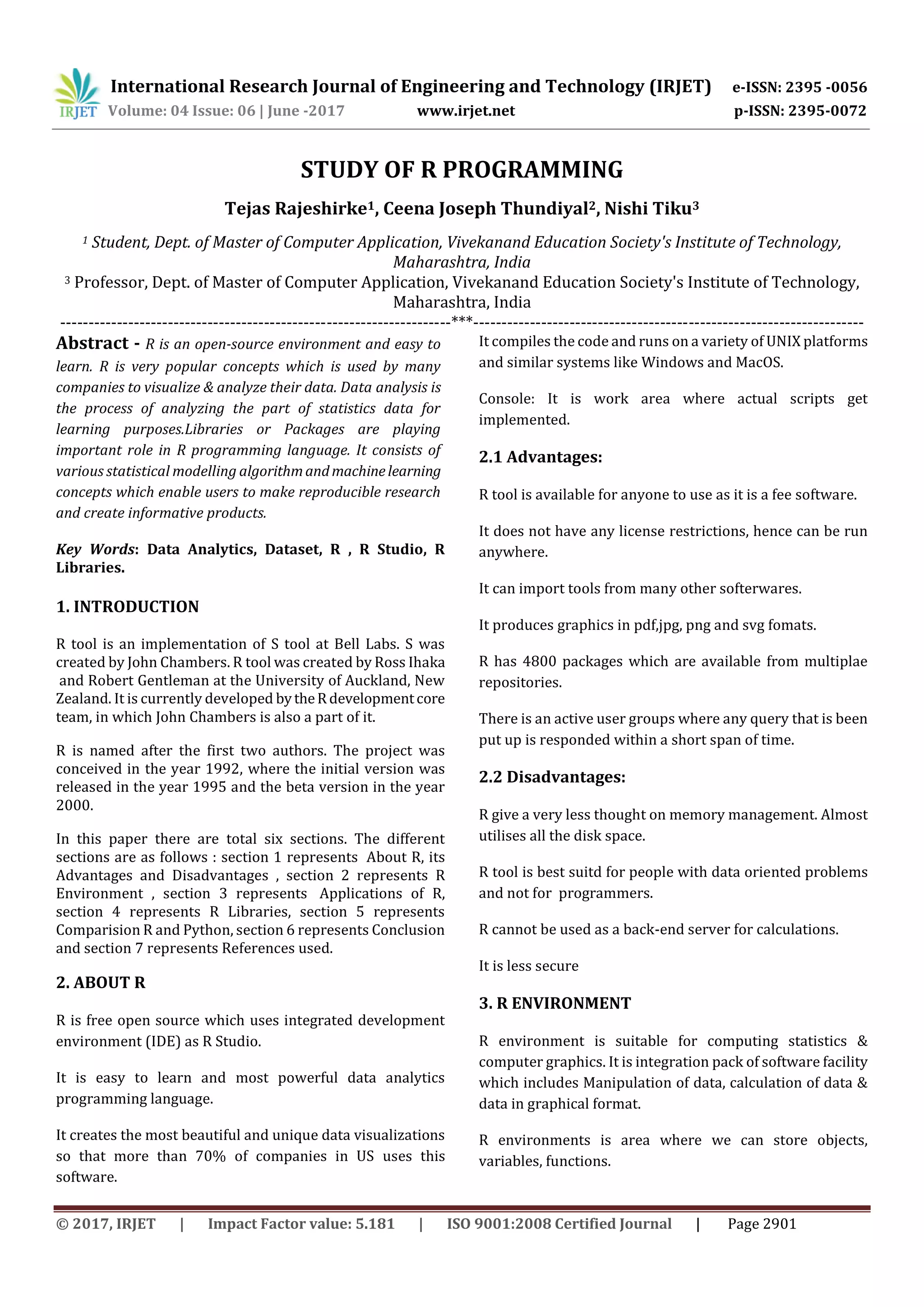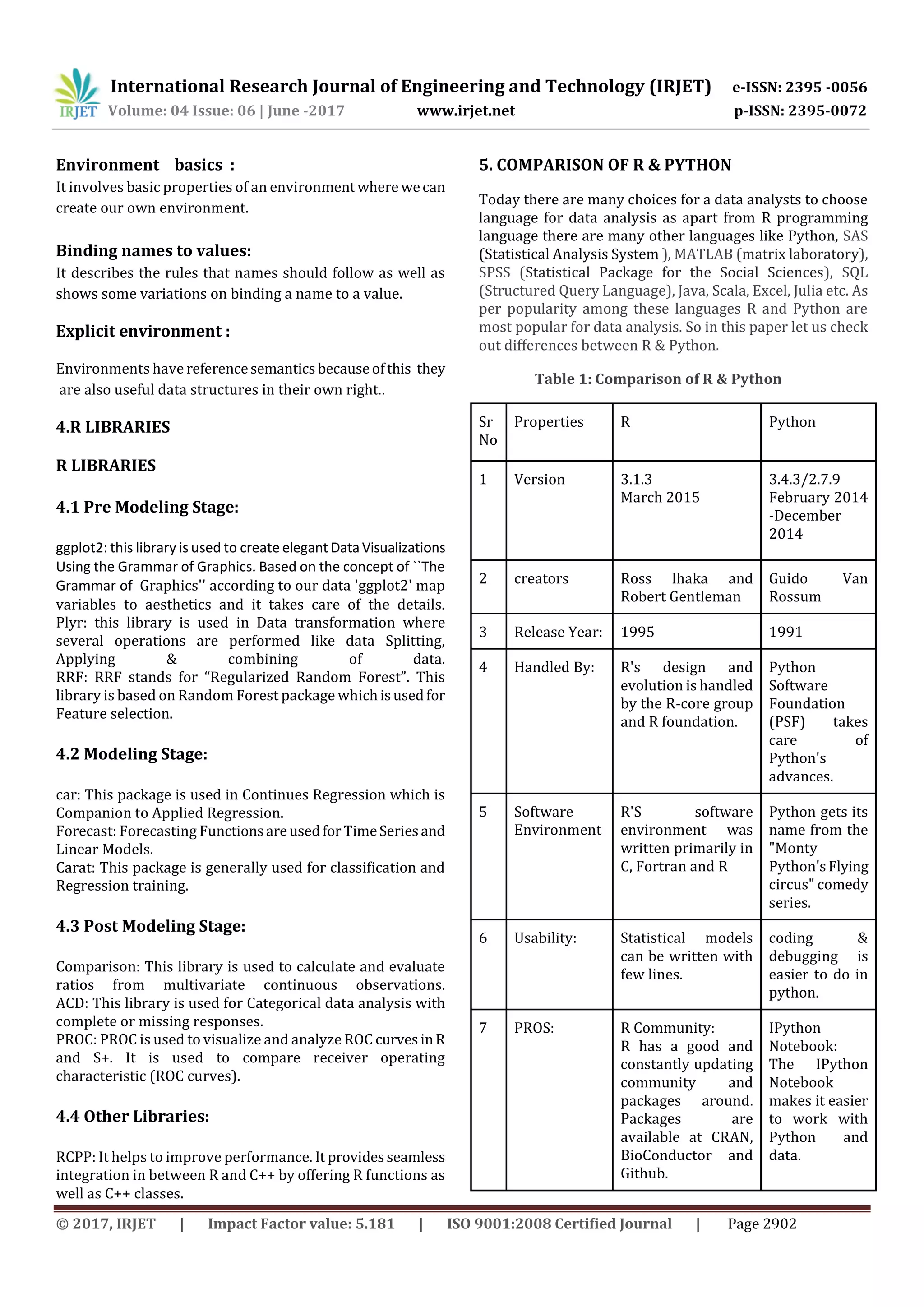This document discusses R programming and compares it to Python. R is an open-source programming language commonly used for statistical analysis and visualization. It has many libraries that enable data analysis and machine learning. The document compares key aspects of R and Python, such as their creators, release years, software environments, usability, and pros and cons. It concludes that R is easy to learn and offers powerful graphics and statistical techniques through libraries, making it well-suited for data analysis applications.


![International Research Journal of Engineering and Technology (IRJET) e-ISSN: 2395 -0056
Volume: 04 Issue: 06 | June -2017 www.irjet.net p-ISSN: 2395-0072
© 2017, IRJET | Impact Factor value: 5.181 | ISO 9001:2008 Certified Journal | Page 2903
8. CONS: R is slow
R will follow a lot of
codes to minimize
the data structuring
and all.
Python is a
challenger toR.
It Does not
offer much
package
strength than
R.
6. CONCLUSION
R is very popular language and easy to learn which
offers graphics & statistics techniques. Libraries plays
main role in R Studio and environment. CRAN allow
you to browse packages by topics which we want and
also it offers set of tools where we can automatically
install package of areas of interest. Due to multiple
features in R, it has numerous applications and used in
every field today.
7. REFERENCES
[1] https://www.analyticsvidhya.com/
[2] https://www.kaggle.com/
[3] https://www.r-project.org/
[4] https://discuss.analyticsvidhya.com/t/download-the-
complete-list-of-powerful-r-libraries-for-data-analysis/2624
[5] http://www.inside-r.org/why-use-r
[6] http://blog.revolutionanalytics.com/
[7] http://adv-r.had.co.nz/Environments.html
[8] https://www.datacamp.com/community/tutorials/r-or-
python-for-data-analysis#gs._vEf4Ac
[9] https://www.r-bloggers.com/environments-in-r/](https://image.slidesharecdn.com/irjet-v4i6714-180308052325/75/Study-of-R-Programming-3-2048.jpg)